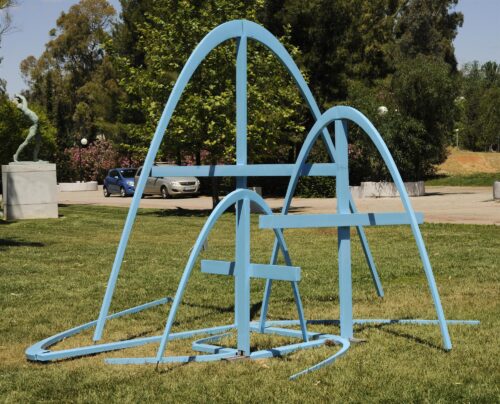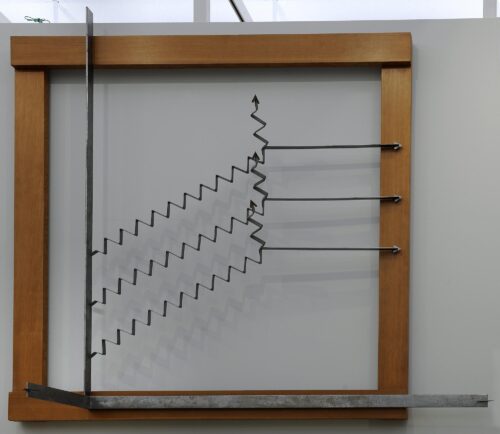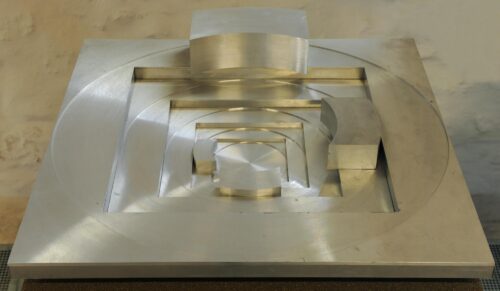
Pastra Nausika (1921 - 2011)
Connection VII (from the series “Proportions III”), [1982 - 1984]
She began her studies at the Sommerakademie (1957) in Salzburg, where she took sculpture lessons from Ewald Matare, and continued at the Academy of Fine Arts in Vienna (1957-1962), where she was taught sculpture by Fritz Wotruba. She also studied Sociology of Art at the Ecole Pratique des Hautes Etudes (1967-1973) in Paris with Jean Cassou. In 1971, her work “Synectron” was patented in France.
In 1963, she had her first solo exhibition at the Wurthle Gallery, Vienna, followed by solo events in Greece and other countries. She has also participated in group exhibitions, including the Salon de la Jeune Sculpture in Paris, the International Exhibition of Contemporary Art in Dusseldorf (1973), the Europalia in Belgium (1982), the Alexandria Biennale (1982), in which she won the third award for sculpture, and the Metamorphoses of the Modern at the National Gallery in Athens (1992).
Beginning with anthropocentric work, Nausika Pastra progressively turned towards abstraction. Since 1968, she has developed a personal plastic language, in which mathematical relations and experimentation with geometric forms play a leading role. The outcome of her experimentations in this direction was Synectron, a new, dynamic two-dimensional shape, evolving from the combination of a circle and a square, part of her series Analogic. Analogic eventually incorporated the third dimension, in sculptures based on semicircle and right angle patterns, which in the 1990’s became more dynamically assertive in 3-D space; her work has evolved into a representation of the material aspect of things in space and time.

Connection VII (from the series “Proportions III”), [1982 - 1984]

Relations – Rhythms no 3, 1995

Synectron-Square-Circle, 1976

We use cookies to make our site work properly, to personalize content and ads, to provide social media features and to analyze our traffic. We also share information about how you use our site with our social media, advertising and analytics partners. Read the Cookies Policy.
These cookies are necessary for the website to function and cannot be switched off in our systems. They are usually only set in response to actions made by you which amount to a request for services, such as setting your privacy preferences, logging in or filling in forms. You can set your browser to block or alert you about these cookies, but some parts of the site will not then work. These cookies do not store any personally identifiable information.
If you disable this cookie, we will not be able to save your preferences. This means that every time you visit this website you will need to enable or disable cookies again.
These cookies tell us about how you use the site and they help us to make it better. For example these cookies count the number of visitors to our website and see how visitors move around when they are using it. This helps us to improve the way our site works, for example, by ensuring that users find what they are looking for easily. Our website uses Google Analytics for statistics reporting.
Please enable Strictly Necessary Cookies first so that we can save your preferences!